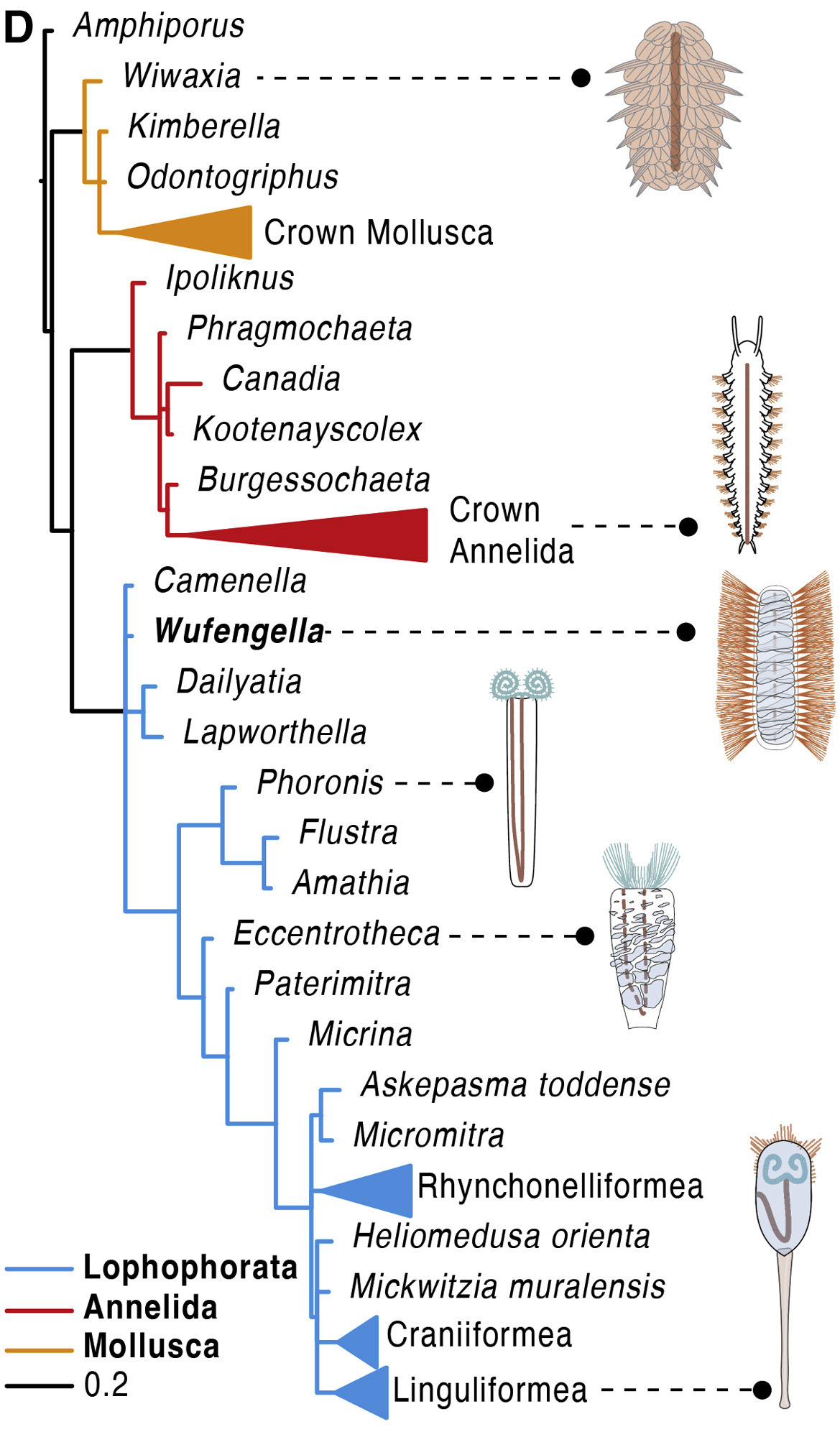Tommotiid on:
[Wikipedia]
[Google]
[Amazon]
Tommotiids are an extinct group of
 Five families are recognized:
Five families are recognized:
Cambrian
The Cambrian ( ) is the first geological period of the Paleozoic Era, and the Phanerozoic Eon. The Cambrian lasted 51.95 million years from the end of the preceding Ediacaran period 538.8 Ma (million years ago) to the beginning of the Ordov ...
invertebrates thought to be early total-group lophophorates (the group containing Bryozoa
Bryozoa (also known as the Polyzoa, Ectoprocta or commonly as moss animals) are a phylum of simple, aquatic animal, aquatic invertebrate animals, nearly all living in sedentary Colony (biology), colonies. Typically about long, they have a spe ...
, Brachiopoda
Brachiopods (), phylum (biology), phylum Brachiopoda, are a phylum of animals that have hard "valves" (shells) on the upper and lower surfaces, unlike the left and right arrangement in bivalve molluscs. Brachiopod valves are hinged at the rear e ...
, and Phoronid
Phoronids (Taxonomy (biology), taxonomic name Phoronida, sometimes called horseshoe worms) are a small phylum of marine animals that Filter feeder, filter-feed with a lophophore (a "crown" of tentacles), and build upright tubes of chitin to suppo ...
a), including members of the lophophorate stem group
In phylogenetics, the crown group or crown assemblage is a collection of species composed of the living representatives of the collection, the most recent common ancestor of the collection, and all descendants of the most recent common ancestor. ...
, as well as early diverging members of the crown group
In phylogenetics, the crown group or crown assemblage is a collection of species composed of the living representatives of the collection, the most recent common ancestor of the collection, and all descendants of the most recent common ancestor ...
.
The majority of tommotiids are mineralised with calcium phosphate rather than calcium carbonate
Calcium carbonate is a chemical compound with the chemical formula . It is a common substance found in Rock (geology), rocks as the minerals calcite and aragonite, most notably in chalk and limestone, eggshells, gastropod shells, shellfish skel ...
, although silicified examples hint that some species bore carbonate or carbonaceous sclerite
A sclerite (Greek language, Greek , ', meaning "hardness, hard") is a hardened body part. In various branches of biology the term is applied to various structures, but not as a rule to vertebrate anatomical features such as bones and teeth. Instea ...
s.
'' Micrina'' and '' Paterimitra'' possess bivalved shells in their larval phases, which preserve characters that might position them in the Linguliformea and Rhynchonelliformea stem lineages respectively. This would indicate that the brachiopod shell represents the retention of a larval character.
For a long part of their history, the tommotiids were only known from disarticulated shells - a complete organism had not been found. The 2008 discovery of '' Eccentrotheca'' offered the first insight into a complete organism, and permitted a reconstruction of the animal as a sessile, tube-like animal made up of a spiral of overlapping plates. Articulated specimens of '' Paterimitra'', discovered a year later, suggest a similar form and lifestyle - it is possible that many tommotiids need redescribing as sessile tube-dwellers. ''Eccentrotheca'' and other similar sessile tommotiids were likely filter feeder
Filter feeders are aquatic animals that acquire nutrients by feeding on organic matters, food particles or smaller organisms (bacteria, microalgae and zooplanktons) suspended in water, typically by having the water pass over or through a s ...
s, similar to modern lophophorates.
However, the discovery of the articulated camenellan '' Wufengella'' showed that it was a free-living worm-like animal, suggesting that it was not a crown-group
In phylogenetics, the crown group or crown assemblage is a collection of species composed of the living representatives of the collection, the most recent common ancestor of the collection, and all descendants of the most recent common ancestor. ...
lophophorate, as the last living common ancestor of all living lophophorates has been predicted to be sessile, as bryozoans, brachiopods and phoronids are. This indicates that tommotiids are paraphyletic
Paraphyly is a taxonomic term describing a grouping that consists of the grouping's last common ancestor and some but not all of its descendant lineages. The grouping is said to be paraphyletic ''with respect to'' the excluded subgroups. In co ...
, with some tommotiids more closely related to bryozoans, brachiopods and phoronids than to other tommotiids.
These discoveries have produced an alternative model for the origin of the brachiopod
Brachiopods (), phylum (biology), phylum Brachiopoda, are a phylum of animals that have hard "valves" (shells) on the upper and lower surfaces, unlike the left and right arrangement in bivalve molluscs. Brachiopod valves are hinged at the rear e ...
s; it suggested that they evolved by the reduction of sessile tube-like organisms, until only two shells were left. This contrasts with the brachiopod fold hypothesis which suggests that they formed by the folding of a halkieriid
The halkieriids are a group of fossil organisms from the Lower to Middle Cambrian. Their eponymous genus is ''Halkieria'' , which has been found on almost every continent in Lower to Mid Cambrian deposits, forming a large component of the smal ...
-like organism.
Taxonomy
 Five families are recognized:
Five families are recognized:
References
{{Taxonbar, from=Q7819141 Cambrian invertebrates Lophophorata